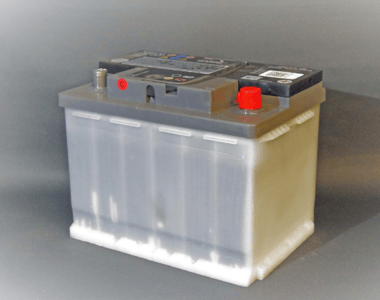-
Bangor Marina Bangor, Northern Ireland
-
Conwy Marina Conwy, North Wales, Wales
-
Deacons Marina River Hamble, Southampton, England
-
East Cowes Marina East Cowes, Isle of Wight, England
-
Haslar Marina Haslar, Portsmouth Harbour, England
-
Penarth Marina Penarth, Cardiff, Wales
-
Portishead Marina Portishead, Bristol, England
-
Portland Marina Portland, Dorset, England
-
Rhu Marina Rhu, Firth of Clyde, Scotland
-
Royal Quays Marina Royal Quays, North Shields, England
-
Weymouth Marina Weymouth, Dorset, England

10th July 2025
Bangor
Safety Spotlight - The Rise of Lithium Batteries on Boats
This week, a fire broke out at tBangor Council’s recycling centre, sparked by a discarded lithium battery. It’s a timely reminder that while lithium technology offers real advantages, it comes with risks if not handled correctly. That warning applies not just on land, but on the water too.
More and more boat owners are switching to lithium batteries, and it’s easy to see why. Lithium iron phosphate batteries—often labelled LiFePO₄—are lighter, more compact, and last much longer than lead-acid alternatives. They deliver consistent voltage throughout their cycle, they recharge much faster, and you can use up to 90 percent of their capacity, compared to around 50 percent for lead-acid.
Done properly, it’s a serious upgrade.
But “done properly” is the key phrase here. Lithium batteries aren’t just a drop-in replacement. They require a very different approach, especially when it comes to charging.
Start with temperature. Lithium batteries must be charged within a specific range—generally between 0°C and 45°C. Charging below freezing can trigger a process called lithium plating, which quietly damages the battery from the inside. It won’t always cause immediate failure, but it builds up over time and can eventually lead to serious issues. Some high-end batteries include internal heaters to avoid this, but many don’t. In cold weather, it’s critical to know what your system can safely handle.
Next is the Battery Management System, or BMS. This isn’t a luxury, it’s a necessity. The BMS keeps track of each individual cell inside the battery, constantly monitoring voltage, temperature, and charge levels. It protects the battery from overcharging, prevents thermal issues, and keeps everything balanced. If a lithium battery lacks a BMS, or if the BMS is bypassed, you’re rolling the dice.
Several marine fires in recent years have been traced back to systems with no proper battery management in place.
Charging behaviour is another important difference. Lead-acid batteries use a three-stage process: bulk, absorption, and float. That float stage keeps the battery topped up at a constant voltage. Lithium batteries don’t work that way. They charge using a constant current/constant voltage (CC-CV) profile. Once they reach full charge, they shouldn’t be held there unnecessarily. Prolonged float charging may not cause immediate harm, but it will reduce the battery’s lifespan. A good lithium charger will recognise when the battery is full and stop delivering current, without floating it like a lead-acid system would.
And that’s where some people get caught out. A charger designed for lead-acid batteries is often not suitable for lithium. Using the wrong charger can result in overcharging, uneven cell voltages, and in some cases, thermal runaway. That’s when heat builds up uncontrollably inside the battery, potentially leading to gas venting or fire. It’s rare,but it’s real, and it usually comes down to poor installation or mismatched equipment.
Cheap, off-brand batteries often add another layer of risk. Some lack proper safety certifications. Others skip key internal protections altogether to cut costs. A lithium battery might look fine on the outside, but without quality components and a robust BMS, you’re relying on luck. When fires do happen, they often involve poorly made batteries or systems installed without enough technical oversight.
That said, it’s important to keep perspective. A well-designed, properly installed lithium system is safe and reliable. If you’re thinking of making the switch, the key is to ask the right questions. Does the battery include a BMS? Is the charger lithium-compatible? Will it shut off safely once the battery is full? Has the whole system been installed in a well-ventilated area, with clear access for inspections and maintenance?
It’s also worth noting that while lithium batteries can recharge faster than lead-acid, that only holds true if the rest of the system is built to support it. Your alternator, solar setup, or shore charger needs to be capable of supplying the right current. A lithium battery will only charge quickly if your charging gear can keep up.
In the end, lithium batteries are here to stay. They offer real advantages, especially for boats that rely heavily on electrical systems. But they come with technical demands. They’re not fit-and-forget, they require proper setup, the right equipment, and a little understanding of how they behave.
If you’re unsure, get advice from someone who knows what they’re doing.
The rewards are worth it—but only if you take safety as seriously as you take performance.
Q&A: What Every Boater Should Know About Lithium Batteries
- Q: Can I just swap out my lead-acid battery for a lithium one?
A: Not without checking your charging system. Lithium batteries need a specific charging profile. Using a charger designed for lead-acid batteries can shorten battery life—or worse, create a safety hazard - Q: Do I need a BMS if I only use a small lithium battery?
A: Yes. Every lithium battery installation should include a proper Battery Management System. It keeps the cells balanced and prevents overcharging or overheating—no matter the size of the system. - Q: Can lithium batteries be left on charge like lead-acid ones?
A: No. Lithium batteries don’t like being held at full charge. A good lithium charger will shut off automatically once the battery is full. Continuous “float” charging, like with lead-acid, will reduce their lifespan. - Q: Is it safe to charge in freezing conditions?
A: Not unless the battery has a built-in heater. Charging below 0°C can cause permanent internal damage. Some batteries can safely operate at low temperatures, but charging is a different matter. - Q: Are lithium batteries more dangerous than lead-acid?
A: Not if installed and managed correctly. Most fires or failures come from poor-quality batteries or incorrect setups. Stick with certified equipment, use a proper charger, and get it professionally installed if in doubt.
Sources for further reading
ABYC: Lithium-Ion Battery Safety (abycinc.org) Click Here
MorgansCloud: A Guide to Lithium vs Lead Click Here
Abyss Battery: Marine Safety Advice Click Here
Battler Born - Charging Lithium Batteries: The Basics Click Here





















